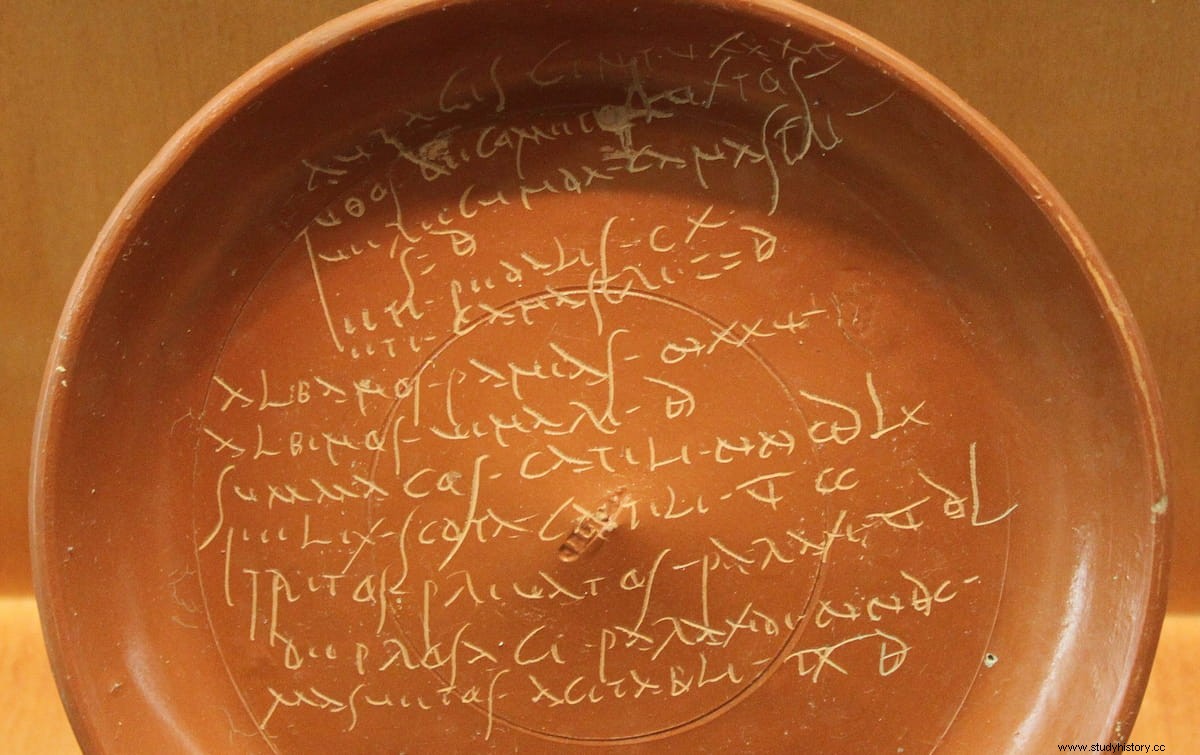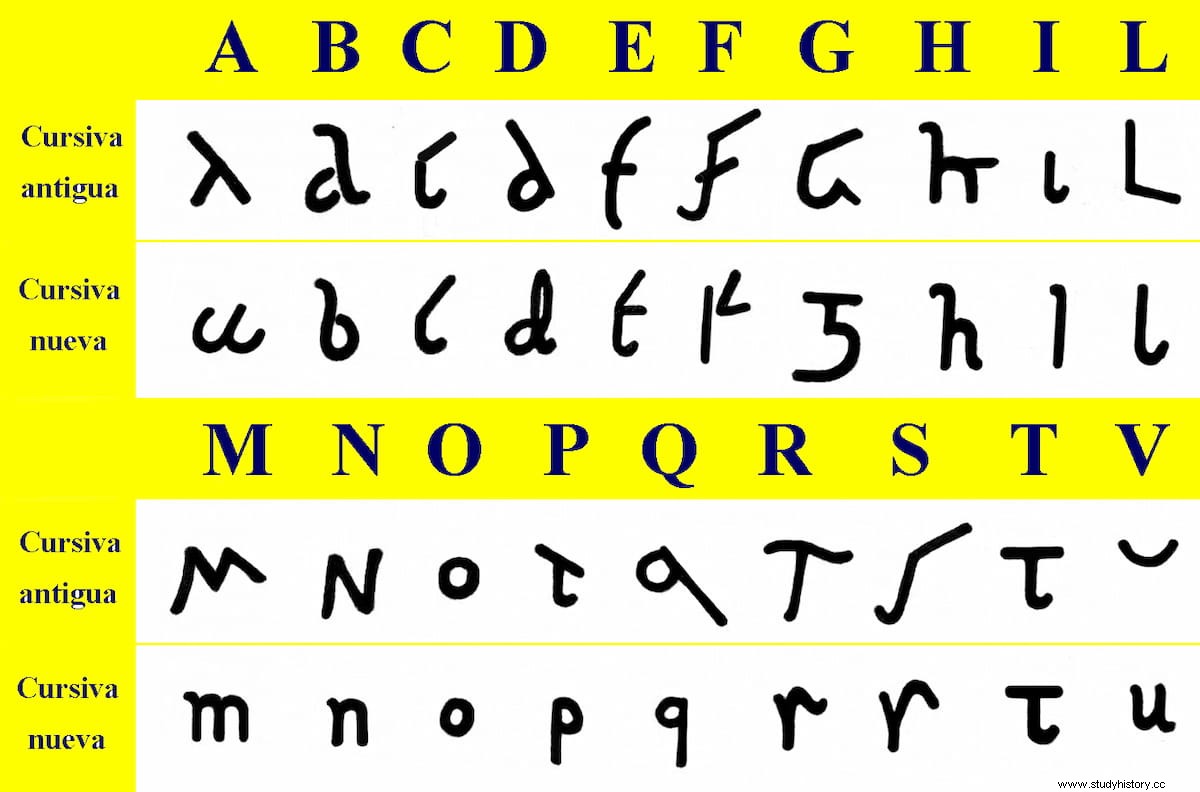It may seem obvious, but the truth is that practically all the Roman inscriptions that we see on statues, steles, tombstones and monuments are written with capital letters, so that it seems that they used only these in their writings. Nothing could be further from the truth, since the Romans also had cursive writing and used lowercase.
In fact cursive writing with capital letters was the form of everyday writing, used for example to write letters, by children at school, by merchants to keep their accounts, or by the emperor to issue orders. It was also the writing of the bureaucracy and in which the originals of the laws that were kept in the archives were written on papyrus.
However, to make the laws public and for all those inscriptions that were intended to be read by the common people, capital letters were used, since italics could only be understood by those who had passed a basic level of education.

Plautus in his work Pseudolus (The impostor) highlights the difficulty of many Romans to read it:
Plautus, Pseudolus 21-30

In this ancient cursive script, which was used until the 3rd century AD. for example, the tablets found in the Vindolanda camp, in the United Kingdom, and also many of the inscriptions that have been preserved in Pompeii are written. It used to be used on papyrus and for this reason the examples that have come down to us are not very abundant.
Thanks to them we know that few ligatures were used, and that some letters are still difficult to recognize, such as A, or can even be confused, such as B and D. This type of writing would have evolved from writing with capital letters, as a result of simplification and outlining when typing at high speed.

From the 3rd century this old cursive evolved into a new cursive which was in use until about the 7th century, well into the Middle Ages. The letters already have a spelling that is much more familiar to us, and they begin to be proportional instead of varying in size with the old cursive, using ligatures. It will be this writing (along with the uncial and semi-uncial) that in the different regions of the disappeared western empire will give rise to the lowercase letters that we use today.
Some researchers believe that even uncial calligraphy evolved from ancient cursive, and since it came into use from the 3rd century AD. would have been contemporary with the new italics. What differentiated it was that the letters of the uncial (so called due to an error in interpreting a text by St. Jerome where he speaks of uncial litterae when referring to capital letters) had rounded shapes, since the new supports such as parchment, which were not as rough as papyrus, allowed writing without lifting the pen using longer strokes.

The semi-uncial script, which is what a shortened version is called of the uncial that appears in the Codex Basilicanus of Hilario, it also began to be used in the 3rd century, and like the uncial its use extended until the 8th century. At first it was used only by pagan authors, although from the sixth century it also began to be used to transcribe Christian texts. The semi-uncial was especially successful in the British Isles, where it arrived in the 5th century and was the basis for the creation of the Old English Latin Alphabet.
